
San Francisco Chinatown art show explores power disparity in urban planning, drawing parallels with events in Hong Kong, Singapore and elsewhere
- In ‘Perilous Playground’, at San Francisco’s Chinese Culture Centre, 11 artists and collectives address the price paid by minorities as cities are remodelled
- The show comes as the city’s Chinatown undergoes change, but its Hong Kong-born curators aim to offer hope to communities, and push for influence in the future
For 50 years, the non-profit Chinese Culture Centre of San Francisco (CCC) has adjoined that city’s oldest public square.
That will soon change.
Since 2017, San Francisco has been planning a US$438 million overhaul of the city’s public spaces and facilities. Under this scheme, the square will be closed and remodelled, and the bridge permanently removed.
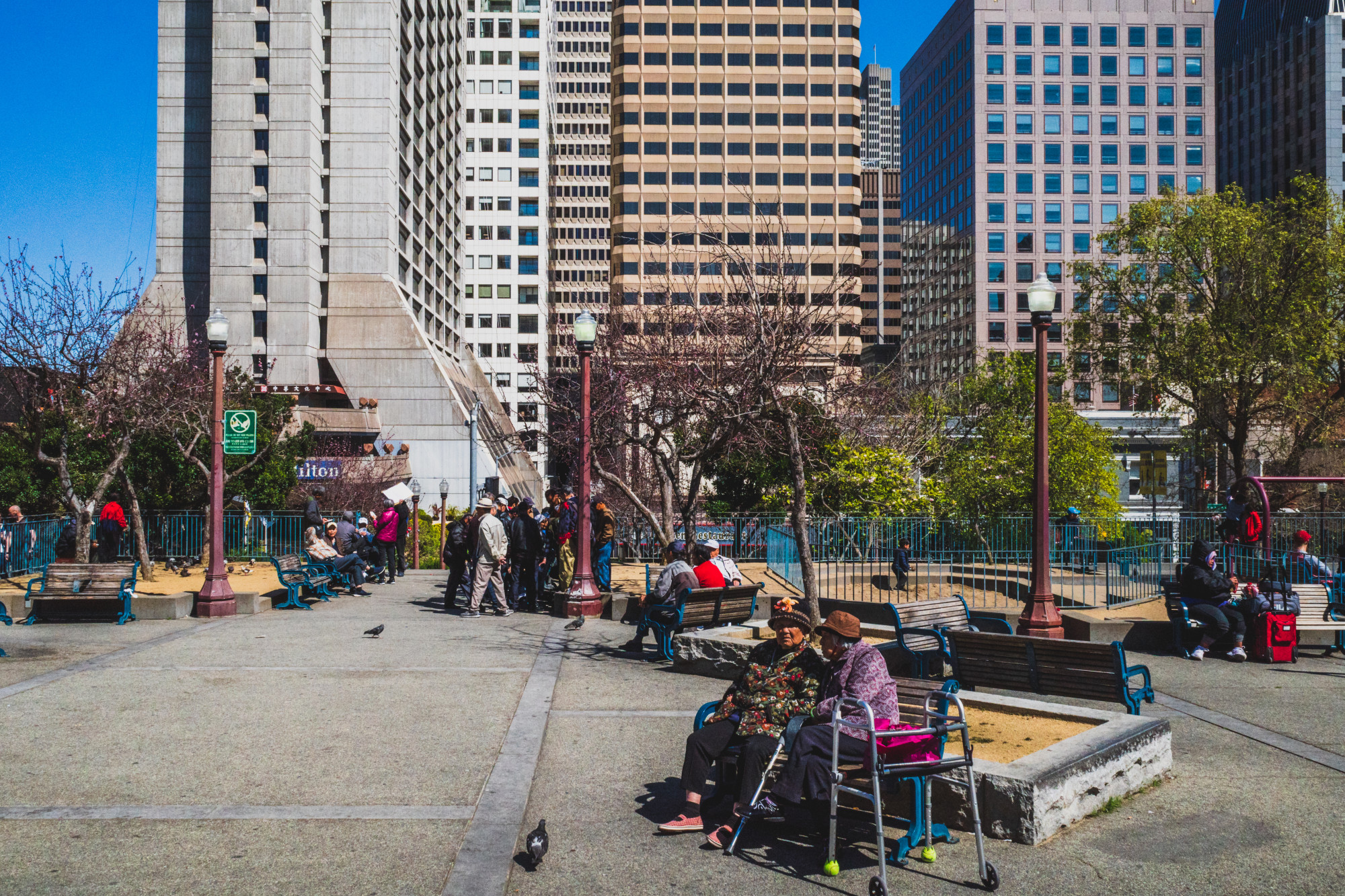
Historically, urban planning in the Bay Area has often been at the expense of racial minorities.
Portsmouth Square, for instance, is but one block away from the old site of the International Hotel, which served elderly Filipino and Chinese residents and immigrant families until it was torn down to make way for the financial district in 1979. Only through tireless campaigning by activists was it rebuilt.
Even as renovation in Portsmouth Square promises new perks and much-needed services to the community, the power disparity of urban planning – who has a say, who benefits and who gets dispossessed – is a live issue.
A contemporary art exhibition called “Present Tense 2023: Perilous Playground”, which recently opened at the CCC, links what is happening in San Francisco with battles fought by grass-roots communities elsewhere, especially in Hong Kong, where the show’s curators, C&G Artpartment, come from.
Included in the visual dialogue between 11 artists and art collectives based on the United States’ west coast and in the United Kingdom, Singapore, Hong Kong, and Taiwan is a pop-up stall by a group calling themselves “Wang Chau Tin Yuen” – which means the field of Wang Chau in Cantonese.
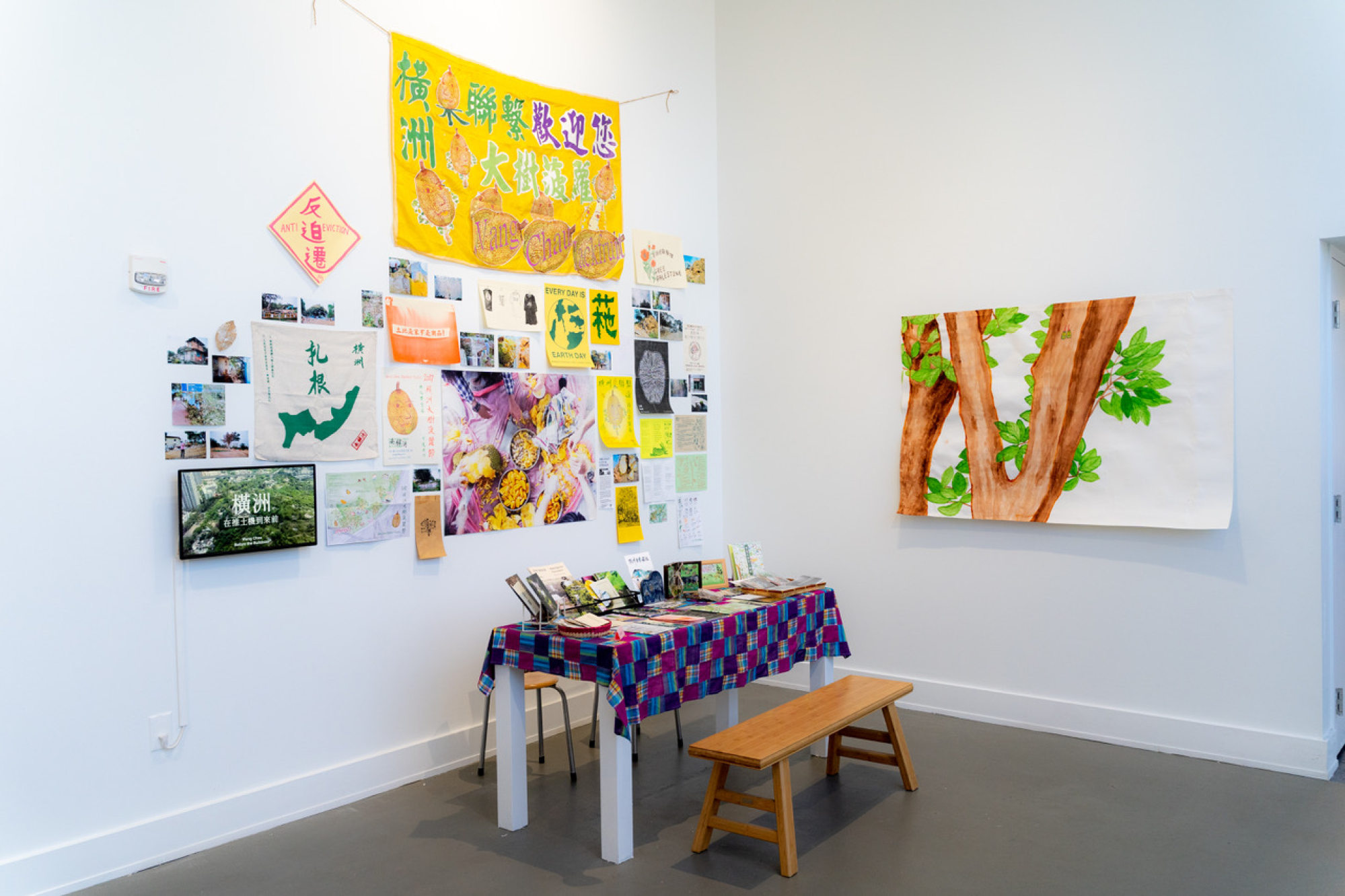
The collective, comprising evicted villagers, gardeners and artists, made zines, photo albums, posters and handcrafted souvenirs to raise awareness of capitalist commodification and ecological abuse.
Posters call for international solidarity, while articles and video clips record the sacrifices made in Wang Chau.
The development of urban spaces in San Francisco Chinatown is like a microcosm of cities around the world
Next to it, Singaporean collective Post-Museum asks about the impact of urban sprawl beyond the living.
Their piece, Bukit Brown Index #132: Triptych of the Unseen, is a virtual-reality video about Singapore’s historic cemetery for Chinese immigrants, the titular Bukit Brown.
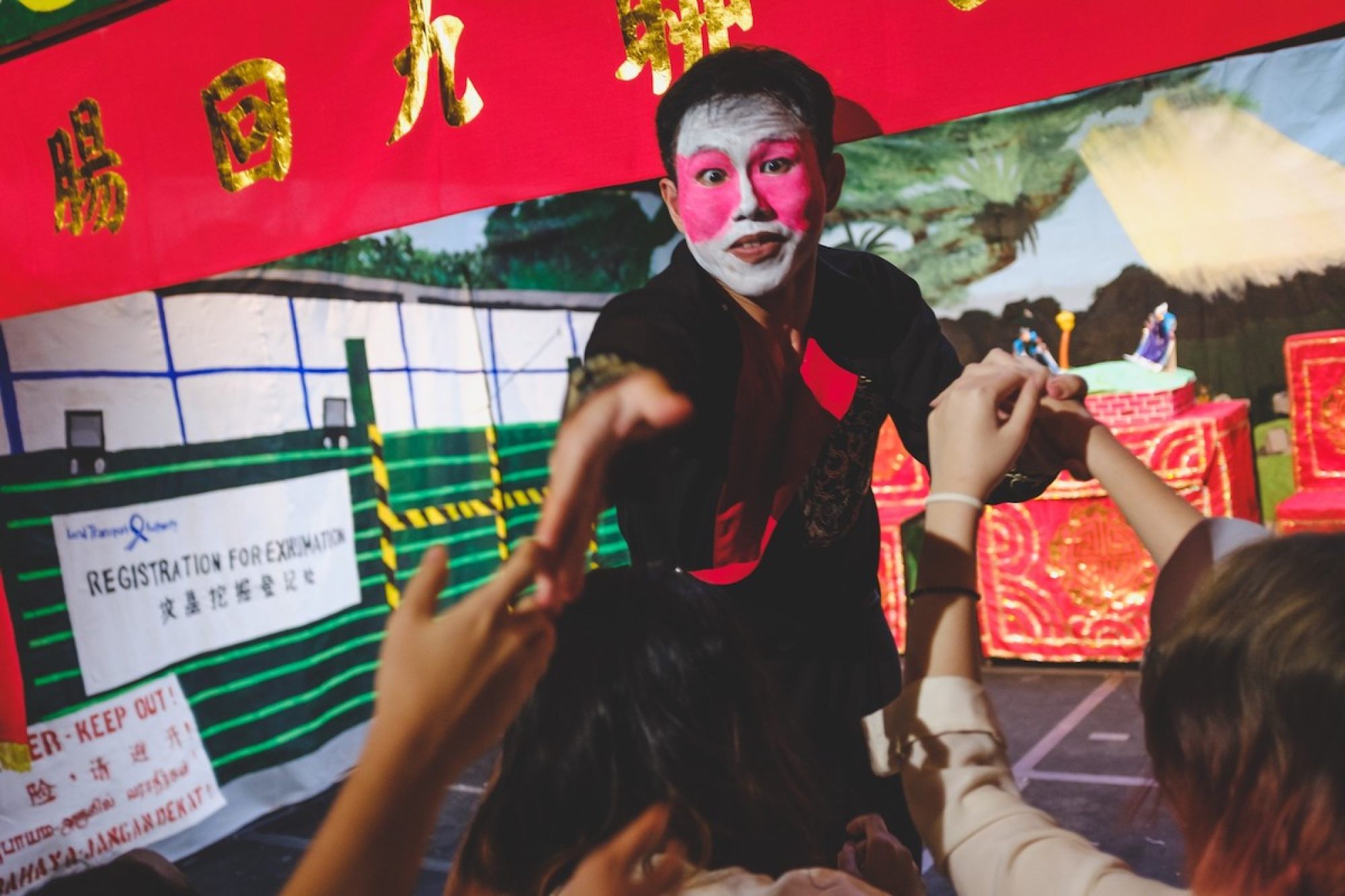
Wearing the VR headset, we watched from the front row of a virtual theatre a play about a ghost, an activist, and a bureaucrat.
Haunted by a creeping sense that we were not alone, we turned to find, with a shudder, that we were surrounded by a virtual audience, masked and barely moving.
This is an ingenious use of virtual reality which makes the audience hyper-aware of feeling crammed into one place and being unfree.
The young, San Francisco-based filmmaker collective called Lucky Rabbit Pictures imagines a world ruled by an immortal pigeon in their animated short, Bridge to Everywhere (2023).
Crossing centuries and galaxies, the wild sci-fi has delivery pigeons displacing Amazon.com and thwarting war and climate change. The video’s meme-like humour has a sombre undertone.
The pigeon’s feats are done in honour of its only friend, a Chinese immigrant. After the latter’s death the bird downloads his memory, making itself a living monument to the immigrant’s dreams and trauma.
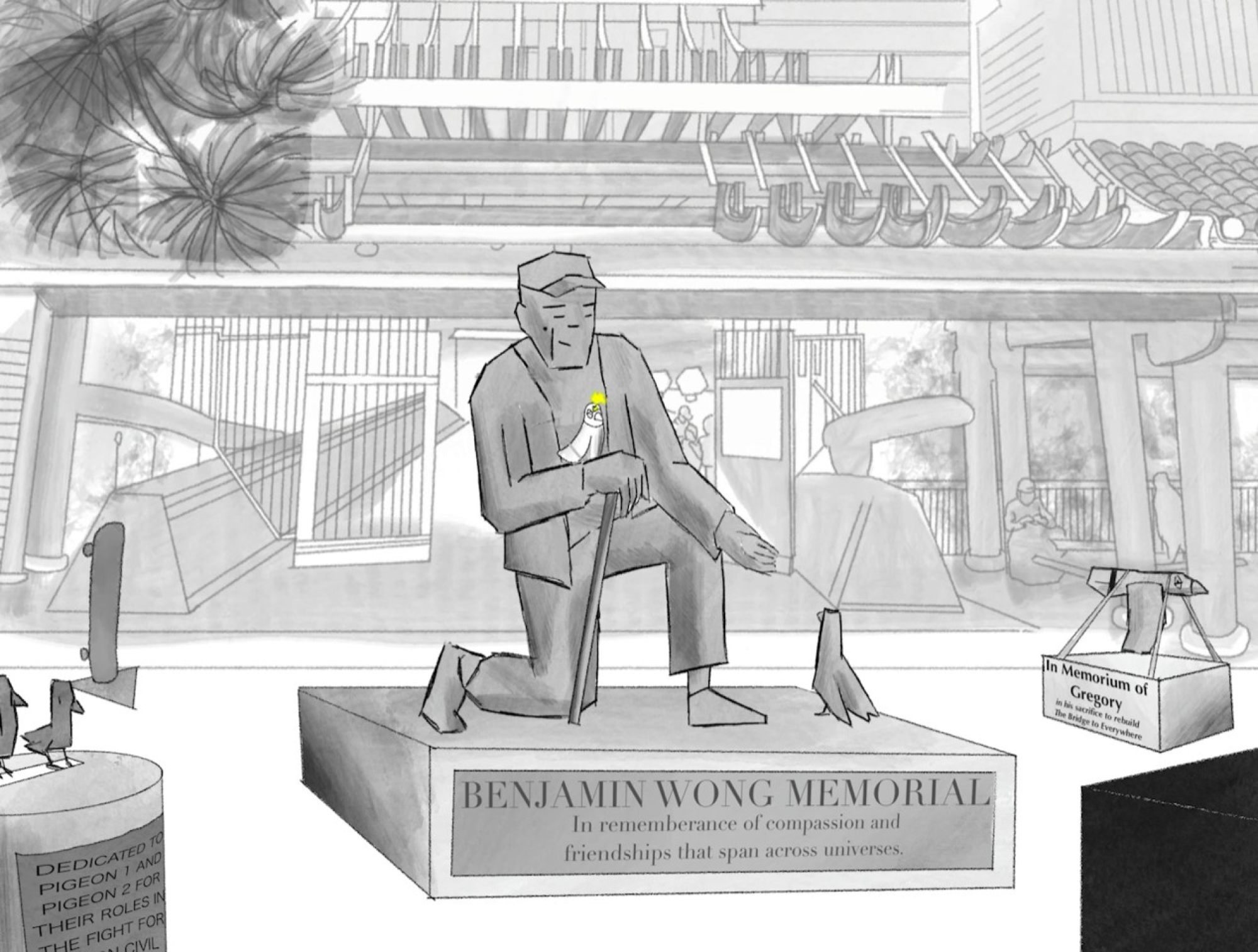
The couple have operated at the intersection of art, society and politics for years. Cheung was elected a district councillor in 2020 before resigning the following year ahead of new, mandatory tests of patriotism introduced by the government.
The couple left Hong Kong in 2022 as they no longer felt it was a safe space for what they call “creative dissent”. Since settling in the UK, the duo have been able to continue their work and now consider C&G Artpartment a multi-city platform.
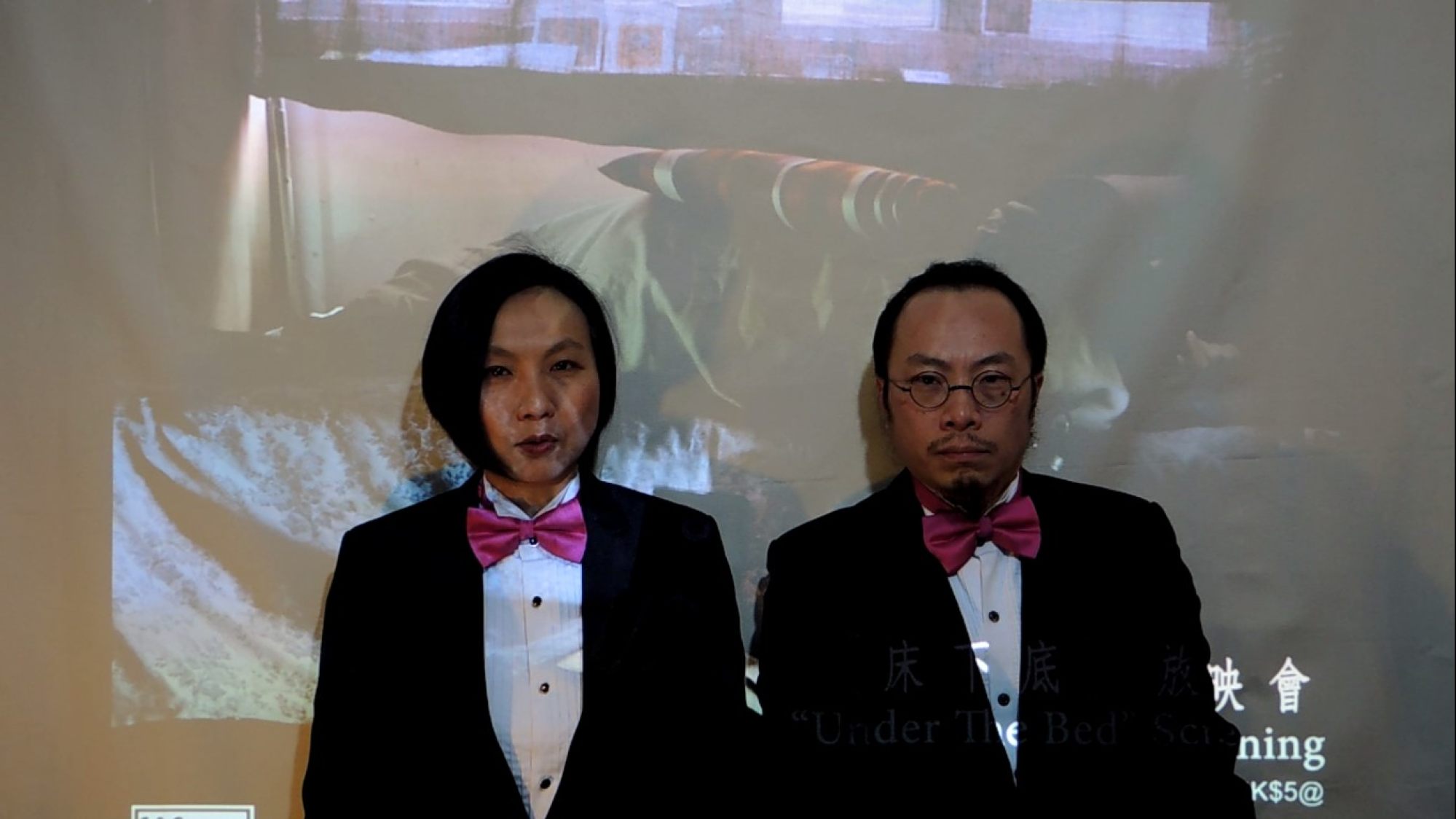
“Perilous Playground” is both site-specific and made with a global awareness, says Cheng.
“The development of urban spaces in San Francisco Chinatown is like a microcosm of cities around the world. Factions fight openly or in the dark, each serving their own need and self-interest.
“When interest, especially political interest, is on the table, it inevitably forecloses other things: often, public property and intangible resources are the first to bear the brunt of so-called revitalisation or improvement projects.
“Then, it is the poor, the dissident, the minority, etc who are targeted,” he says.
Hong Kong artist South Ho’s work sets the tone for the show. He has placed a pile of foam blocks shaped to resemble pavement bricks for visitors to play Jenga with.
The lightness of the “bricks” is countered by the heaviness of the memories recalled by the photographs taken by Ho during the 2019 Hong Kong protests, when anti-government protesters used pavement bricks to build barricades and as weapons.
The title of the show – “Perilous Playground” – reflects the part playful, part precarious nature of the show.
The sense of precariousness comes from the fact that the future of the site itself is in question, as well as the show’s inclusion of materials which have now faded into memory, such as news footage from the now-closed Hong Kong online media outlet Stand News.
Meanwhile, the playfulness alludes to the fact that there is always a chance for constructive strategies. In San Francisco, at least, the CCC and its peers are leading an effort to get the authorities to consider community input in the designing of the new square.
The long game, then, is to get artists and other community members to do more than respond to changes – that is, to have a seat at the table.
“Present Tense 2023: Perilous Playground”, Chinese Culture Center of San Francisco, 3/F 750 Kearny Street, San Francisco, Tue-Sat, 10am-4pm. Until Aug. 10, 2024.
